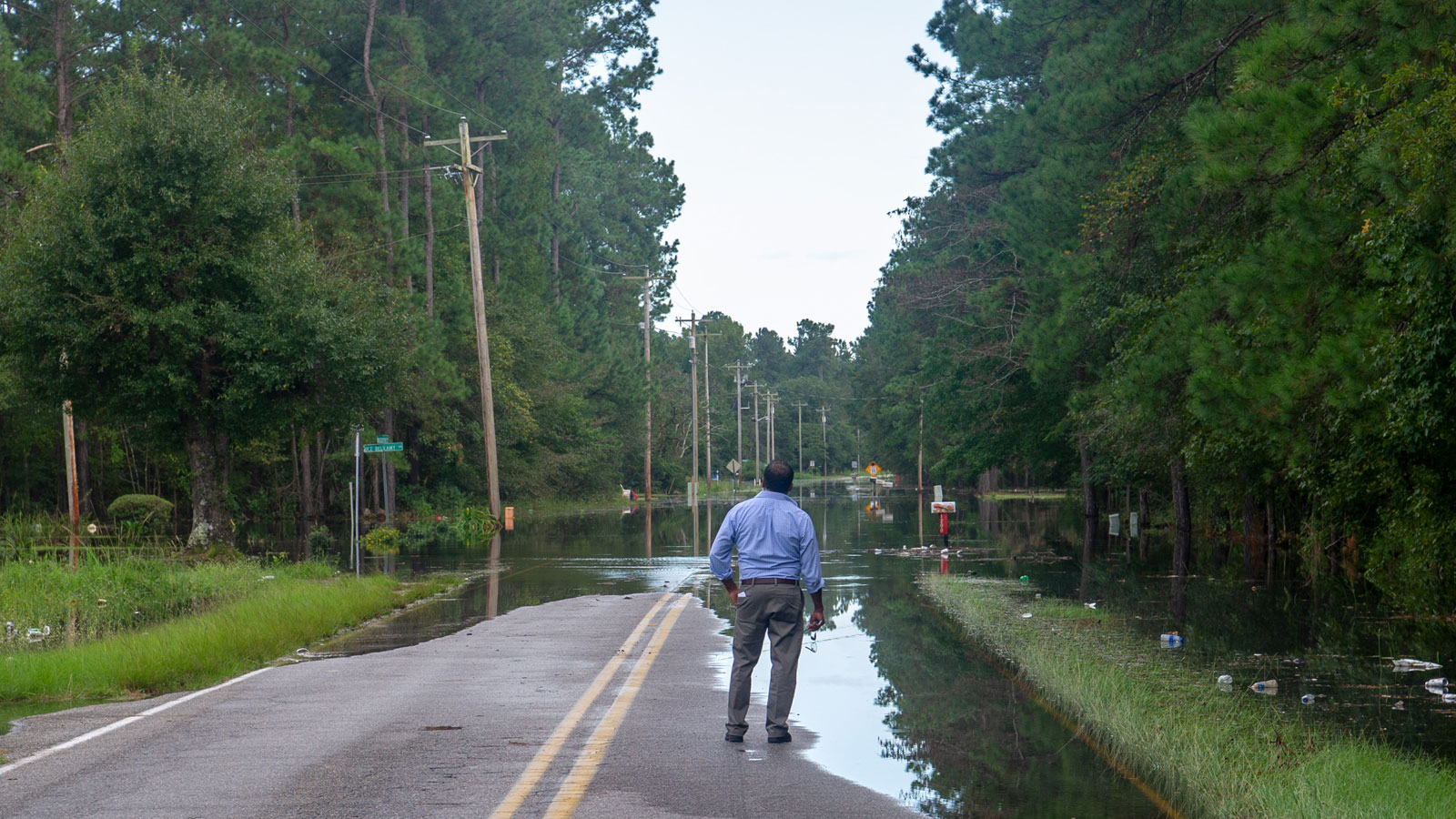When heavy rain falls on a field or in a forest, it’s slowly absorbed into the soil. But in urban and suburban areas, the water rushes across roofs, roads, and sidewalks.
“All that water kind of goes downstream and offsite to the nearest lower location,” says Eban Bean of the University of Florida. “And that can be a good thing, except for the places that are downstream where all that water is collecting. So those are the places oftentimes that are a lot more vulnerable to flooding.”
Bean says that to prevent flooding, many communities direct excess rainwater into basins. Then it can seep into the soil or be slowly released downstream.
But typically, these stormwater systems were not designed with climate change in mind. And in Florida and many other states, heavy downpours are becoming more frequent and intense as the climate changes.
So Bean says many communities need to upgrade their stormwater systems to prevent overflow.
“The decisions that we make today, they kind of lock in place the stormwater management of the future,” he says. “The more that we address these issues now and come up with more sustainable solutions for the future, the better off we’re going to be and the better legacy that we’ll have in the future.”
Reporting credit: Stephanie Manuzak/ChavoBart Digital Media


